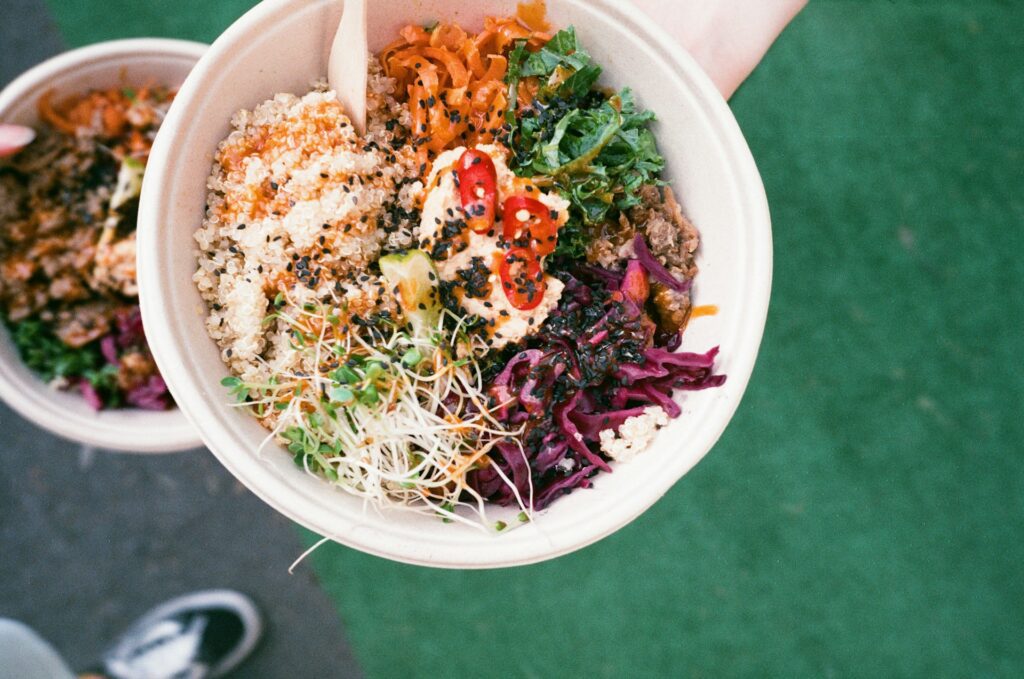Healthy White Rice Alternatives You Should Implement into Your Meal Plan

White rice has been around for ages as a go-to base for all kinds of meals, from breakfast to dinner. Still, it’s not exactly the most balanced thing you can scoop onto a plate. Sure, you get quick energy from those refined carbs, but most of the fiber, vitamins, and minerals you’d get from whole grains or plant-based grains are missing. If you’re trying to eat better, lose a little weight, or get a handle on your blood sugar, swapping out white rice might actually change the way you feel.
Here are a few options loaded with nutrients, easy to use, and honestly way more interesting than plain white rice. They slip into anything from stir-fries to grain bowls without missing a beat.
Quinoa: The Complete Protein Grain
Quinoa shows up on all kinds of nutrition lists, and honestly, there’s a reason people hype it so much. Unlike most plants, it’s got all nine amino acids, so you actually hit the “complete protein” mark without needing meat or dairy. If you avoid gluten, even better, because it’s naturally gluten-free. Plus, it’s packed with fiber, magnesium, iron, and B vitamins, so you’re getting way more than just carbs.
Quinoa also helps keep you full and your blood sugar from spiking. Quinoa’s nutty flavor works in a ton of dishes – swap it for rice in gluten-free meal options like stir-fries or mix it into salads. It’s somehow both hearty and light, and fits into pretty much any kind of meal.
Cauliflower Rice: A Low-Carb Powerhouse
Cauliflower rice is having a bit of a moment, mostly because you can eat a bunch of it and barely touch your daily carb count. All you have to do is blitz up raw cauliflower until it looks kind of like rice, and you get a pile of veg loaded with vitamin C, vitamin K, folate, and a bucket of antioxidants. Diabetics and anyone eyeing keto or low-carb diets tend to love it for all these reasons. It’s also got enough fiber to keep your digestion on track. Cooking it is quick – just a few minutes in a pan with whatever spices you like, and it soaks up the flavors of everything you throw at it. Use it anywhere you’d use rice (even sushi, if that’s your thing) and you’ll barely notice the swap.
Brown Rice: The Whole-Grain Upgrade
If you want that classic rice taste and look, but better for you, brown rice is the obvious choice. It keeps the bran and germ (unlike white rice), so you get way more fiber, manganese, magnesium, and selenium out of every bite. That extra fiber is great for keeping you full, stabilizing blood sugar, and just generally supporting your heart.
Switching to brown rice isn’t a huge leap taste-wise – it’s just chewier and nuttier. Yeah, it takes a bit longer to cook, but soaking can speed things up and make it easier to digest. Throw it under a curry, fill up a grain bowl, or stir it into a pilaf; it’s a straightforward upgrade.
Barley: A Heart-Healthy Grain
Barley kind of gets ignored these days, but it’s still one of the best grains around if you care about nutrition. It’s full of soluble fiber, especially beta-glucan, which has been shown to bring down cholesterol. There’s also plenty of selenium, phosphorus, and copper. Plus, barley is lower on the glycemic index than white rice, so you dodge those big blood sugar swings.
It’s chewy and will fill you up for long – ideal for soups, risottos, casseroles, or just as a side. If you want something hearty but a little different, barley’s the way to go.
Farro: The Ancient Mediterranean Staple
Farro has been part of Mediterranean food traditions for thousands of years. It’s got plenty going for it: a strong combo of fiber, protein, iron, and antioxidants. The grain’s chewy bite and nutty flavor don’t just fill you up – they make it easy to swap in for plain white rice.
Because your body breaks down farro more slowly than refined grains, it helps you stay energized longer. That slow-burning quality is good news for athletes or anyone who’s got a full day to get through (so, basically all of us).
It’s easy to cook up a big batch of farro and keep it in the fridge to use all week. Toss it in grain salads, stir it into warm pilafs, or pile it under roasted veggies and lean meats. What at first looks a little rustic suddenly makes a simple meal heartier and more interesting.
Lentils: A Protein and Fiber Powerhouse
Lentils aren’t grains, but they absolutely belong in the mix as a rice alternative. They’re loaded with plant protein and fiber – so you feel full longer, while your gut and muscles get what they need. Folate, potassium, and iron round out their list of nutrients, which all add up to some real benefits for your heart and blood health.
Unlike a lot of grains, lentils cook up fast. They soak up flavors from every cuisine. Red and yellow lentils turn soft and creamy (ideal for stews or curries), while green and black varieties keep their shape and fit right into salads or alongside a main dish. Ditching rice in favor of lentils means lowering your meal’s glycemic load without missing out on protein or micronutrients.
Bulgur: Quick-Cooking and Nutrient-Dense
Bulgur comes from cracked wheat and gets used all the time in Middle Eastern cooking. You get lots of fiber and very little fat, plus a good hit of manganese, magnesium, and iron. Its nutty flavor is subtle, and it’s much less heavy than white rice.
But honestly? The best part is how quick it is. Because bulgur’s already parboiled, it’s ready much faster than most whole grains – perfect when you want a healthy meal without the wait. Use it in grain bowls, mix it into soups, or make a classic tabbouleh salad.
Bulgur is pretty gentle on blood sugar, too, so if you’re trying to keep levels steady, it’s a smart pick that still keeps you full.
Wild Rice: A Flavorful Nutrient Boost
In fact, wild rice is a grass, not a grain, but it brings a bold, earthy flavor and a nice chewiness to the meal. It beats white rice on protein and has antioxidants that help protect your cells. You’ll also get a decent amount of zinc, phosphorus, and magnesium here.
If you like strong flavors, wild rice is for you. It’s great with mushrooms, meats, or veggies – basically anything craving a deeper taste. Sure, wild rice takes a bit longer to cook, but the flavor and bonus nutrients are well worth the wait.
Conclusion
You don’t have to give up taste or satisfaction when you switch out white rice. Try grains like quinoa, farro, and barley, or branch out with cauliflower “rice” or lentils. Every swap brings something new when it comes to protein, fiber, and all sorts of nutrients – and it keeps things interesting in the kitchen.
You don’t have to rush either; try adding these options bit by bit into your regular meals. Before long, your nutrition will be more balanced, your energy will stay steadier, and you’ll open up a whole new world of flavors.
